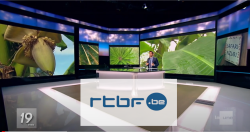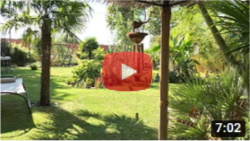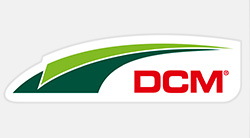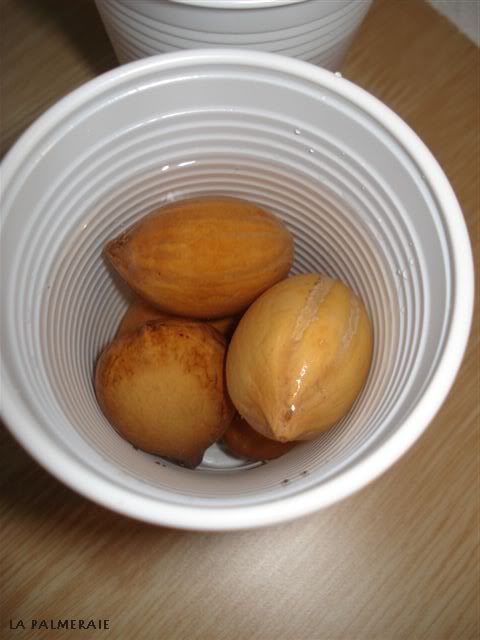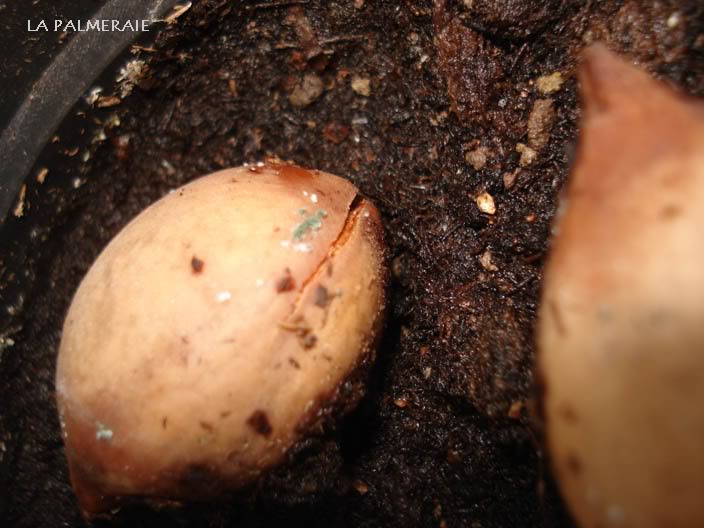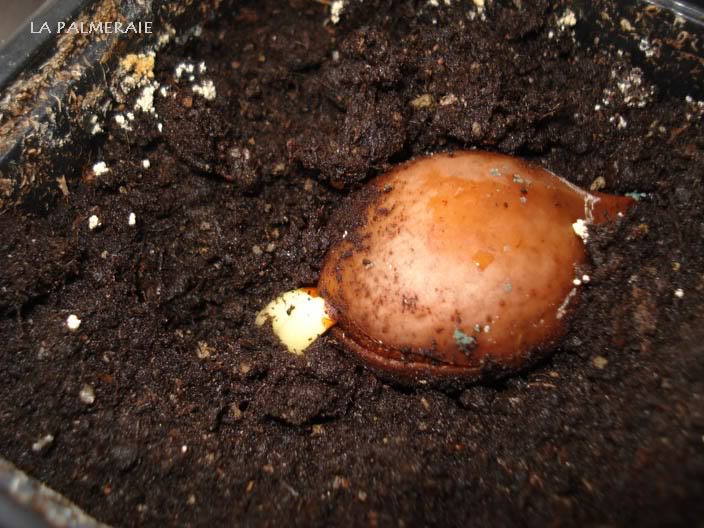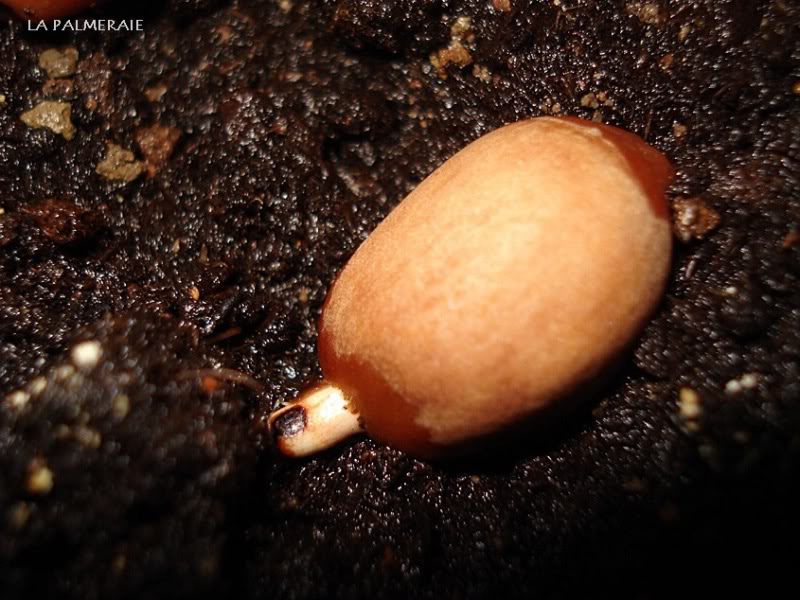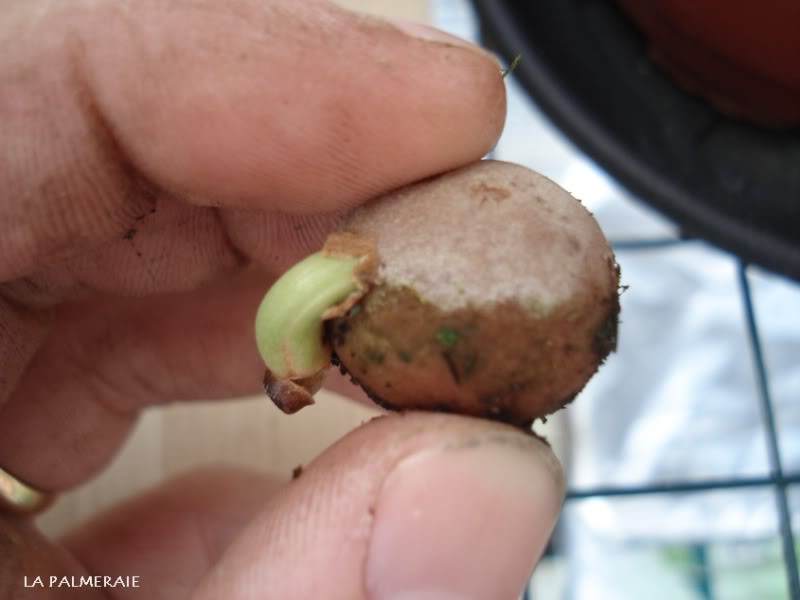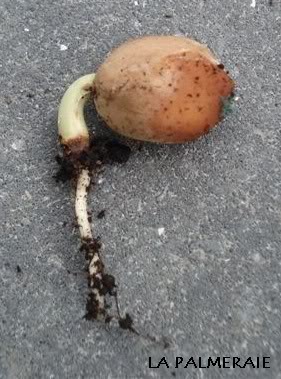Seeds
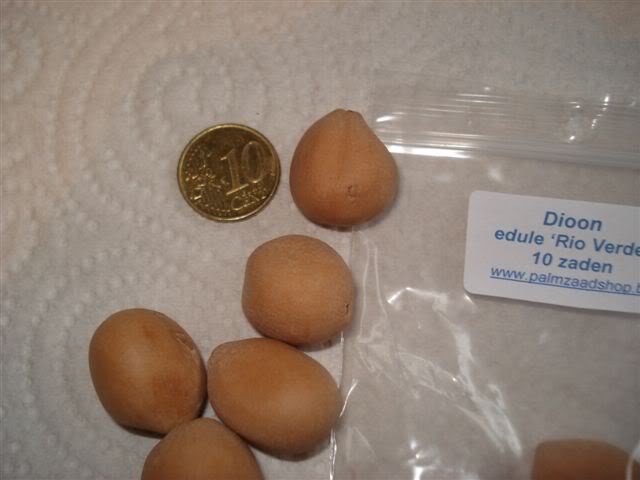
For good germination results, fresh seed is a necessity. Seeds that can’t be sown straight away are best kept in the frige for better conservation.
Cycas- and Dioon seeds do have a hard seed coat. You can try to crack this coat however, the risk of damaging the whole seed is quite important and therefore this method is not recommended. You can also choose to scrub the end of the seed (scarification) so that the water can penetrate into the seed coat better. But this technique is definitely not necessary!
Soaking the seed
It is advised to soak the seeds before sowing for about 24 – 48 hours in warm water. This wil soften the seed coat and accelerate the overall germination. Therefore, fill a cup with warm water, put in the seeds and cover up with some aluminium foil to conserve the warmth. Place the cup on your central heating or other heat source. A thermos bottle can also be used for this purpose but it may be to smelly to use for normal use afterwards. Renew the water every 12 hours or so. Seeds that didn’t sink to the bottom and that rattle when shakend are much less probable to germinate and can’t be left out.
Sowing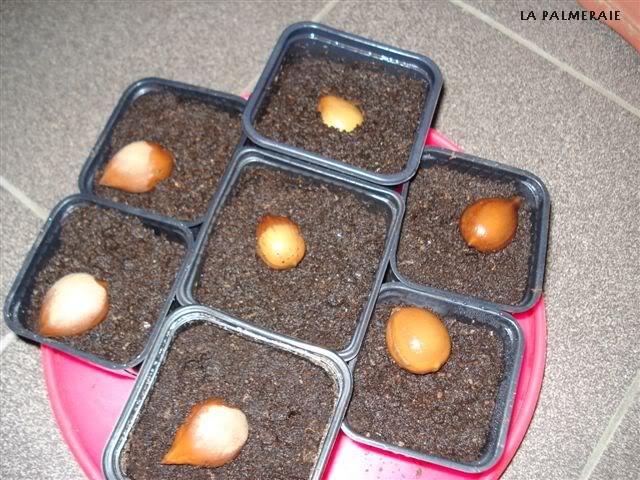
Take a small pot and fill up with a quality seed raising mix. Then put your seeds ON (not in) this mix and just press slightly to fix them in place. The pointy head and butt must be aligned horizontally. Humidify the soil but do not over water to prevent mold. You can eventually cover up with some plastic foil to preserve humidity but ventilate enough to prevent mold grow. Humidify the soil when needed.
Germination
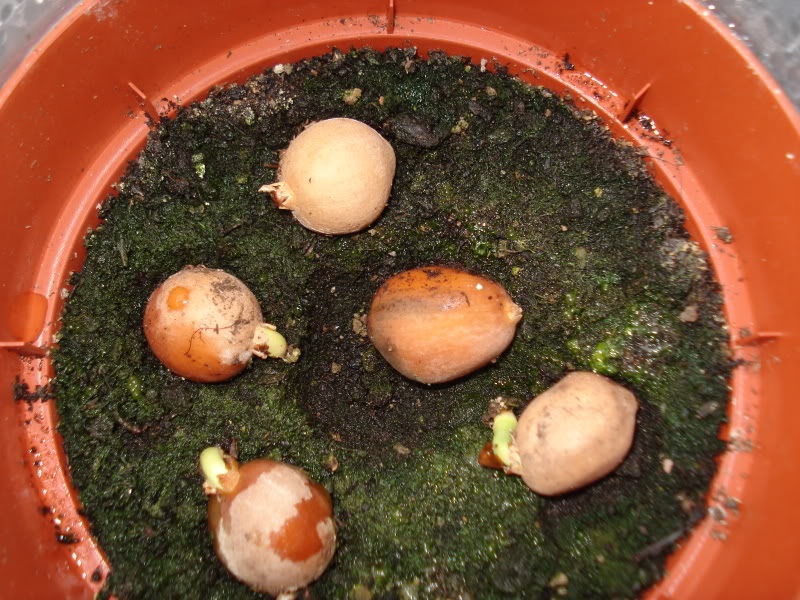
Place the pot on a warm spot, close to a heath source if needed. 25-35°C (77-95°F) will do. The seeds do not need light in this stage. The time required for the seeds to germinate varies form species to species and depends on multiple conditions of course but it could be very quick; the Cycas by exemple may already germinate after only a couple of days! But more patience can be needed, just hang on and provide the ideal conditions.
Transplantation
As soon as the seed has germinated and its root is plunging down, it needs to be transplanted. Take a container with sufficient height (at least 18cm / 7 inches !) and with draining holes in the bottom. Fill up with a quality potting soil and some perlite or grit for optimal drainage. Do not use (to much) fertilizer yet, to prevent to roots form burning. Now your Cycad is good to go for a while and only needs to be transplanted again when new roots will grow from the drainage holes in the bottom.
Growth of a Dioon edule:
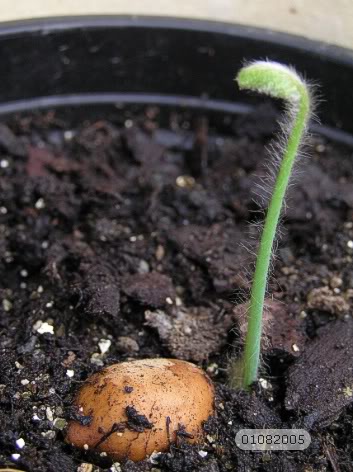
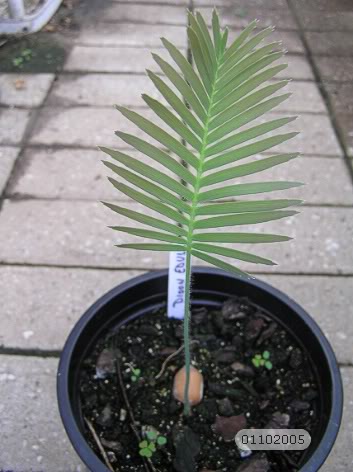
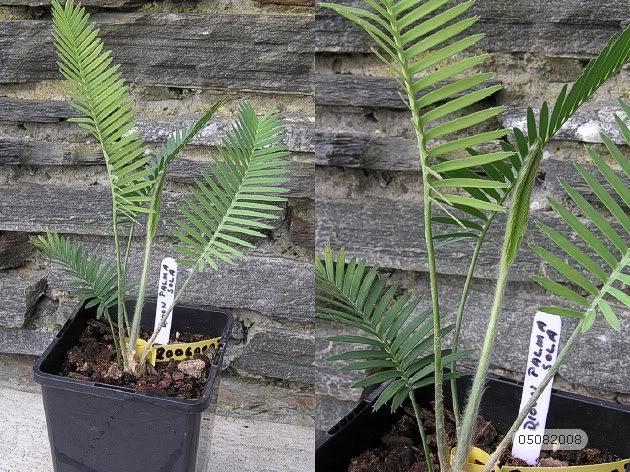
Photos by Paul
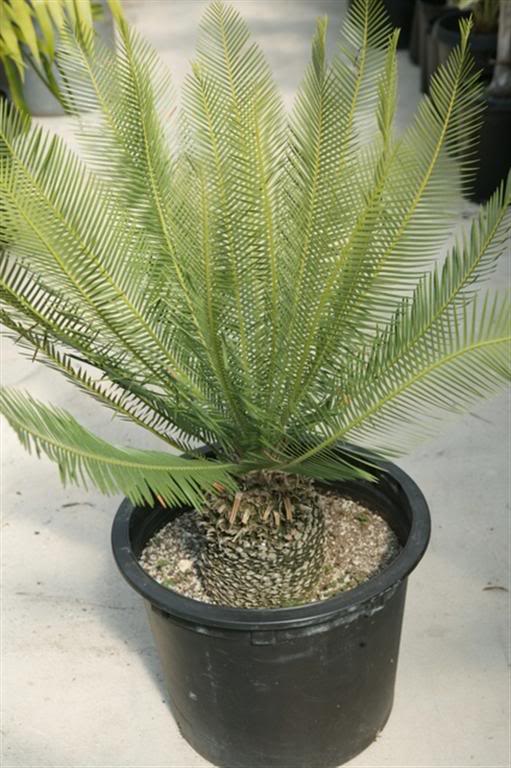
Fertilizing
Add fertilizer in spring and during summer (growing season), during winter this makes little sense. Organic fertilizers are good fertilizers but be careful with non organic fertilizers which are more agressive. Do always respect the manufacturers prescriptions.
Planting
Certain Cycads are hardy enough to be planted outside. Do inform yourself on the specific needs and especially on the hardiness and your local climat. A place form full sun to partial shade works the best.
© La Palmeraie


